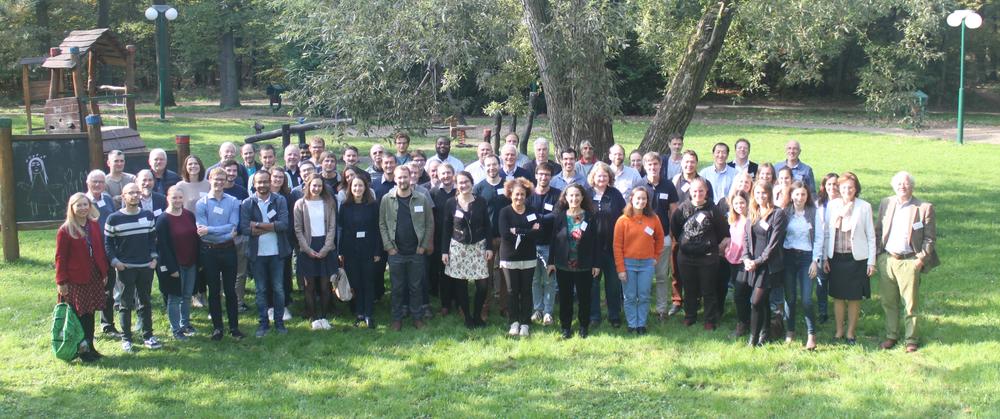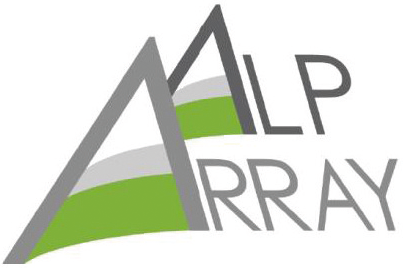Dear Colleagues,
We are pleased to announce that the 6th Annual AlpArray Scientific Meeting will be hosted in Prague, from the 12th-14th of October 2022. We are hoping for an even bigger turnout than in recent years!
The AlpArray project has moved beyond the seismological experiment (2016-2019) to a stage where the wealth of new data is being interpreted and debated. In addition, a spinoff in the form of a new project, AdriaArray, has started. The meeting will bring together geoscientists from the 17 member states and 64 institutions making up the AlpArray consortium, as well as others engaged in Alpine research that is relevant to AlpArray and AdriaArray. The scientific programme comprises three sessions on the surface, crust, and mantle of the Alps and neighbouring mountain belts and basins.
We are delighted that Jaroslava Plomerová and her colleagues at the IGCAS in Prague have renewed their offer to host the meeting in collaboration with the 4DMB project. The meeting will be free for registered participants, as the running costs (including lunch and refreshments) will be covered by the 4DMB (German Research Foundation).
Program
Download the latest version of the meeting program here
11th of October: Early-career scientists meetup and dinner (details below).
12th-14th of October: Main meeting from Wednesday morning until Friday afternoon.
Download scientific contributions
Session Themes
1. Connecting surface and mantle processes2. Contrasting images of deep structure from crust to mantleThe growth and demise of mountains reflect the interplay of processes affecting the surface and the dynamics of Earth’s crust and mantle during subduction and collision. We seek contributions that assess and compare the roles of these different processes, especially in light of new data from AlpArray. This session aims to improve our understanding of surface responses (e.g., changes in morphology, surface uplift, exhumation, source-sink paths) to variations in crustal and mantle structure and its evolution along the Alpine chains.
3. Lithospheric motion and deformation on different time scalesThe present-day structure of the Alpine chains as revealed by AlpArray is a key to understanding their orogenic evolution. This session focuses on the contrasting shapes and physical properties of subsurface rock bodies gleaned from a broad range of geophysical and geological observations. We welcome presentations on orogenic crust and mantle that reconcile diverse data sets and encourage contributions that emphasize first-order differences which seem (at first glance) to be irreconcilable.
4. Special session: ControversiesAlpine structure has changed in space as well as in time, the fourth dimension. This session highlights the motion and deformation of the lithosphere in the Alpine-Mediterranean region on time scales ranging from months and days to millions of years. We are particularly interested in contributions that further our understanding of major changes in plate kinematics during the Alpine orogenesis and their effects on local and short-term motion history within Alpine mountains and basins.
Thanks to the efforts of the AlpArray community, superb data from the AlpArray seismological and complementary experiments have become available for interpretation. However, some of the images generated so far not only differ, but in some cases have led to opposing interpretations for the same subsurface target areas. In this special session, we have invited talks to debate the following controversial questions that are key to the AlpArray program:
- Is there a slab anomaly beneath the northern Dinarides?
- Are the slabs beneath the Alps attached or detached?
- Are slab anomalies continuous down to the Mantle Transition Zone?
- How thick is the lithosphere in the fore- and hinterlands?
- Where is the Adriatic slab beneath the Apennines?
The session has a first part where seismological experts compare their models and a second part where the seismological images are interpreted in a broader geodynamic context. The emphasis will be on comparison and debate, not on rehashing models, and we will make sure that after each talk there is ample time for discussion.
Breakout Sessions
- AdriaArray
- Eastern Alps
- Alps-Pannonian-Dinarides Junction
Venue
The Hotel Globus has again kindly agreed to host the meeting. This year, all room bookings and enquiries should be made directly to the hotel, either by phone (+420 296 799 504), or by email (rezervace@aurelihotels.com). Ask for the Hotel Globus, and use the code AA-4DMB to access special room rates:
- Single room: 46 EUR + 2 EUR City Tax
- Double room: 50 EUR + 2 EUR City Tax
Questions & Comments
General questions or comments should be directed to Peter McPhee (peter.mcphee@fu-berlin.de) or Jaroslava Plomerová (jpl@ig.cas.cz).
Guidelines for presenters
Talk formats:- Regular talks will have a total time slot of 15 mins, including questions
- Controversies session talks should be 10 minutes long, with 10 minutes for questions and discussion
- Landscape orientation
- A0 (841 x 1188 mm)
Early Career Scientists Meetup (11th of October)
After the disruption caused by the pandemic, many early career scientists have missed out on the opportunity to network. So this year, we will keep things simple, with a guided walk around the historic center of Prague, and then dinner. If you didn't sign up but would still like to join, then please contact peter.mcphee@fu.berlin.de.
- Guided walk - 17:00 (Meeting at the Powder Gate at Republic Square (Námestí Republiky))
- Dinner - 19:30 in U Pivrnce (Maiselova 60/3, 110 00 Praha 1)
Directions to the Hotel Globus
Hotel Globus,Information on Public Transport:
Gregorova 2115/10,
Praha 11-Chodov
https://www.praha.eu/jnp/cz/doprava/mhd/
https://metropraha.eu/trasy-metra/
You will need one 90-minute ticket (40 CZK)
- Take bus route 119 in the direction of Centrum
- Leave the bus at the last stop (Veleslavin)
- Take Metro A in the direction of Skalka
- Change at Museum stop to line C in the direction of Haje
- Exit the Metro at stop Roztyly
You will need one 90-minute ticket (40 CZK)
- Take Metro line C in the direction of Haje
- Exit the Metro at stop Roztyly
Time & Location
Oct 12, 2022 - Oct 14, 2022
Hotel Globus, Prague




